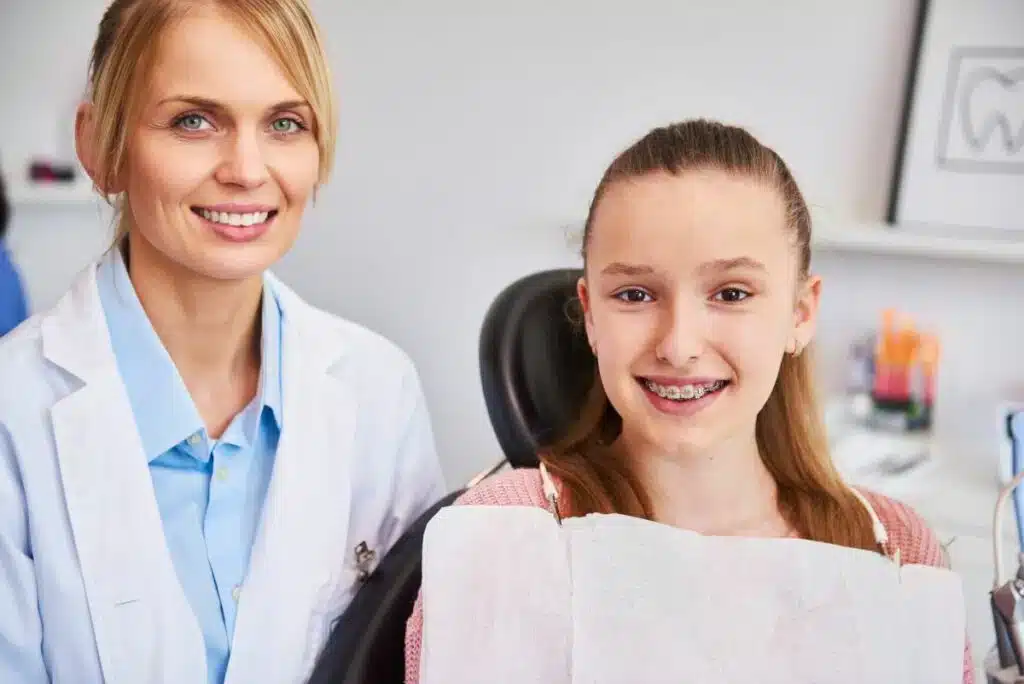The 6-Second Trick For Causey + Hall Orthodontics
The 6-Second Trick For Causey + Hall Orthodontics
Blog Article
The Definitive Guide to Causey + Hall Orthodontics
Table of ContentsCausey + Hall Orthodontics Things To Know Before You BuyOur Causey + Hall Orthodontics StatementsThe smart Trick of Causey + Hall Orthodontics That Nobody is DiscussingThe Single Strategy To Use For Causey + Hall OrthodonticsThe Only Guide to Causey + Hall OrthodonticsHow Causey + Hall Orthodontics can Save You Time, Stress, and Money.
What is the difference between a dental practitioner and an orthodontist? To answer a question that is commonly asked, both dentists and orthodontists aid people get far better oral wellness, albeit in various ways. It aids to keep in mind that dental care is an instead wide scientific research with different medical field of expertises. All dentists, consisting of orthodontists, deal with the teeth, periodontals, jaw and nerves.Orthodontists and dental practitioners both provide dental take care of clients. Orthodontists can operate in a dental office and supply the same therapies as other dental practitioners. You can believe of both doctors that treat gum and teeth troubles. The main difference is that coming to be an orthodontist needs a specific specialized in dealing with the misalignment of the teeth and jaw.
An orthodontist is a dentist that has actually undergone training to specialize in the diagnosis, avoidance and treatment of abnormalities in the jaw and teeth. Their training consists of correcting these existing conditions. They can also identify potential problems in teeth placement that might establish when conditions are left unattended. Orthodontists can aid people of any ages - https://sketchfab.com/causeyh1orth.
What Does Causey + Hall Orthodontics Do?
This includes all the necessary education to become a basic dental professional. According to the American Student Dental Organization (ASDA), it means you will need to have either a Physician of Medication in Dental Care (DMD) or a Doctor of Oral Surgery (DDS). In various other words, orthodontists need to complete oral college and afterwards get an orthodontics specialized education and learning.


Other than the orthodontist, we frequently see assistants working with these dental professionals in their clinics. What is an orthodontist aide called?
Excitement About Causey + Hall Orthodontics
At Advanced Orthodontics, we give patients with a holistic therapy experience. On top of that, we provide adjustable therapy timetables, versatile payment alternatives and a fun, enjoyable experience. Phone call ( 480) 357-4900 today to find out more and schedule an appointment.
An orthodontist is a dentist trained to detect, protect against, and deal with teeth and jaw irregularities. They fix existing problems and are educated to identify issues that may establish in the future. Orthodontists deal with people of every ages, from youngsters to adults. People usually connect an ideal smile with great health and wellness.
All orthodontists are dental professionals, yet not all dental professionals are orthodontists. Orthodontic residency programs use intensive, focused direction for dental specialists. They focus on 2 locations: How to properly and securely relocate teeth Just how to effectively lead growth in the teeth, jaw, and faceOnce an orthodontist has actually completed training, they have the alternative to become board accredited.
Top Guidelines Of Causey + Hall Orthodontics
Misalignment, or malocclusion, is the most typical factor click this site people see an orthodontist - braces. It is hereditary and is the outcome of dimension distinctions between the top and lower jaw or in between the jaw and teeth. Malocclusion brings about tooth congestion, an askew jaw, or irregular bite patterns. Malocclusion is usually treated with: Your orthodontist attaches metal, ceramic, or plastic square bonds to your teeth.
If you have just minor malocclusion, you might have the ability to utilize clear braces, called aligners, instead of standard dental braces. Some people require a headwear to help move teeth right into line with stress from outside the mouth. After dental braces or aligners, you'll require to use a retainer. A retainer is a personalized tool that keeps your teeth in area.
They're most often utilized on children. They can create extra area in the mouth without needing to pull teeth. If you have a major underbite or overbite, you could need orthognathic surgical procedure (also called orthodontic surgery) to extend or reduce your jaw. Orthodontists use cables, surgical screws, or plates to support your jaw bone.
The Buzz on Causey + Hall Orthodontics
Throughout your initial orthodontic assessment, you'll likely have: A dental examPhotos taken of your face and smileDental X-raysPanoramic (360 degree) X-rays of your face and headImpressions to create mold and mildews of your teethThese examinations will aid your orthodontist understand just how to wage your therapy. An orthodontist is a dental professional that's had training to treat your teeth and jaw.
Orthodontists might execute surgical treatment, exams,X-rays,and more to help you obtain a much more comfortable, much healthier smile. An orthodontist is concentrated on your bite, so something like a chipped tooth would be handled by a dentist. Orthodontists are dental experts but not all dental practitioners are orthodontists. Orthodontists are concentrated on your bite, or the way your teeth meshed, and the straightness of your teeth.
8 Easy Facts About Causey + Hall Orthodontics Shown
What exactly does an orthodontist do? Orthodontists are oral specialists that concentrate on remedying irregularities in the teeth and jaws.

These detachable trays are personalized to gradually move the teeth's placement. In instances of narrow jaws, palatal expanders can be made use of to produce room for appropriate tooth placement.
Report this page